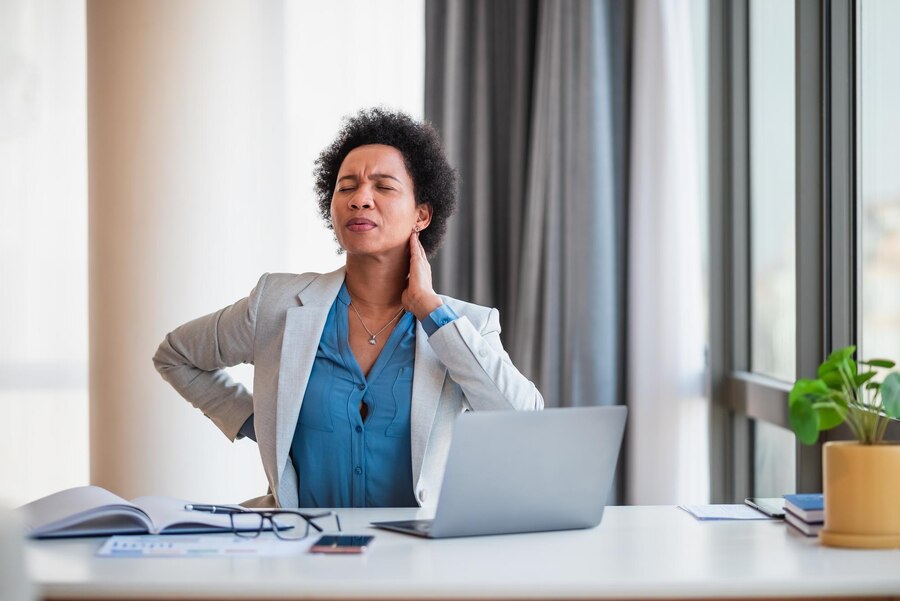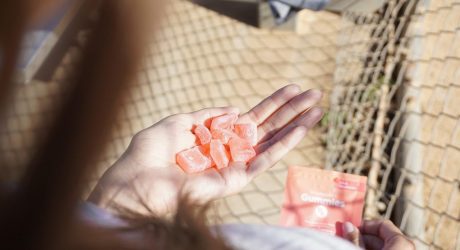Pain that lasts three weeks or more can be defined as chronic pain, according to a study report by the National Library of Medicine. Living with pain that goes on for months is stressful. Therefore, if you are facing chronic stress, you must learn some new ways to Managing Chronic Pain.
Many claim that stress is a slow killer and one of the leading causes of death in people globally. More and more people stress on a daily basis without getting any downtime in between. The result? More body aches, joint pains, headaches, and more. Moreover, not addressing the root causes of your stress-induced chronic pain can lead to an unsatisfactory quality of life, as you will always be anxious and face depression.
However, solving chronic pain is complex since ascertaining the root cause of chronic pain and stress can be challenging. This is why, instead of taking direct measures to deal with stress and chronic pain, I recommend you take general measures that keep the chronic pain at bay, helping you get rid of it steadily.
Therefore, if you are suffering from long-term chronic pain, you are in the right place. After facing it myself, I was glad that I asked a few doctors and a few colleagues of mine for help. They were really supportive of my plight and gave me great tips to help me alleviate chronic pain. While it didn’t vanish instantly, it soon did over time.
Therefore, here are some of the best long-term strategies for Managing Chronic Pain over time!
Best Long-Term Strategies For Managing Chronic Pain
Some of the best long-term strategies to manmage chronic pain over time are:
1. Find A Pain Specialist To Manage Persistent Pain

When in pain, consult a pain specialist. Pain specialists pay attention to a multidisciplinary medical approach to provide lasting relief to headaches, back pain, neck and shoulder pain, and other types of pain.
How Pain Specialists Help Manage Chronic Pain
Doctors specializing in pain management focus on finding the reasons you’re in pain — and what could be done to help.
After conducting a diagnosis, pain specialists create a treatment plan. Many pain specialists, like Dr. Brandon Claflin, use pain management as an alternative to surgical procedures. They can collaborate with you to create custom solutions that address the primary cause of your pain and discomfort.
Your pain management specialist might also combine advanced and holistic treatments. Some examples of treatment options might include epidurals, radio-frequency ablation, lifestyle changes, and more. In many cases, more than one technique could be employed.
2. Try Targeted Exercises
It’s natural to avoid physical activity when in pain. But when the body remains sedentary, muscles and joints tend to stiffen, bones become weak, and anxiety levels rise, thus increasing pain.
Your doctor might recommend physical activities that don’t put too much strain on areas that are painful.
Your healthcare team might recommend the following:
- Swimming
- Walking
- Cycling
- Yoga or pilates
- Stretching
- Strengthening exercises (squats, pushups, glutes, and jumping jacks)
These exercises can boost blood flow and oxygen circulation to reduce tension and inflammation in joints and muscles — hopefully reducing pain. During workouts, your body also releases endorphins or the body’s natural painkillers to lessen pain intensity.
3. Consider Electrical Stimulation

How does this electrical stimulation or E-stim work to provide lasting pain relief?
This therapy relies on electrical pulses to help affected muscles contract. Through repeated contractions in the muscles, blood flow can improve, helping the injured muscles heal. It also can help block nerves from sending pain receptors to the brain.
4. Deep Tissue Massage
Massage is a manual therapy that manipulates the soft tissues. When incorporated after workouts, massage can be effective in relieving pain. The advantages of massage for pain relief range from improved blood flow and oxygen circulation to relaxation. Patients have reported enhanced flexibility, reduced inflammation, and reduced muscle stiffness.
5. Dry Needling
Let’s discuss what dry needling is and how it could lessen pain. Typically, this method involves inserting needles into a trigger point or injured muscle. The needles stay in the muscles for two seconds to 20 minutes.
Dry needling could improve blood flow, decreasing muscle tension, stiffness, and pain intensity. Dry needling is often paired with other physical therapies like workouts and massage to help prevent stiffness or trigger points from recurring.
6. Lifestyle Changes
Your lifestyle can affect the level of pain you experience and its duration. Here are a few lifestyle tips associated with pain-free living:
I. Practice meditation
You have heard of how meditation can lower anxiety and stress levels. But how does it relieve pain?
Meditation can help people explore and investigate the pain rather than push it away or want to end it. That’s because when we resist pain, it sometimes seems like it can get worse. Reports on meditation relay that regular practice can create the biggest impact.
II. Balance meals
According to reports, maintaining balanced eating habits can reduce pain in the long term.
One of the best long-term strategies to manage chronic pain is to cut down on various types of junk foods. Therefore, I recommend avoiding foods that have lots of processed sweeteners, refined carbs, white pasta, and bread. Avoiding such foods will help you reduce inflammation in the painful areas of your body.
Anti-inflammatory foods, such as healthy proteins, fatty acids, whole grains, vegetables, and fruits, can be both delicious and help augment a more comfortable life.
III. Manage stress
Managing stress can easily keep chronic pain at bay. Stress can trigger inflammation, resulting in more pain. A few strategies for coping with daily stress can include finding work-life balance, mindful meditation, yoga, getting enough sleep, and more.
Conclusion: Time To Love Pain-Free Now!
No one wants to live with chronic pain. Reviewing the long-term strategies for living pain-free is one of the first steps to finding a treatment plan. Whether pain is caused by an injury or disease associated with pain, seeking medical intervention can offer hope.
Talk to a pain specialist who can tailor a treatment plan that targets your specific pain. Eating a more balanced diet, getting enough sleep, meditating, managing sleep, and more can offer some assistance, but make sure to talk to a doctor. Expert advice can better address your situation for a solution that is as unique as you are.
Read Also:






![How to Rebuild Trust in a Relationship [According to Experts]](https://www.rslonline.com/wp-content/uploads/2024/12/How-to-Rebuild-Trust-in-a-Relationship-According-to-Experts-2-100x91.jpg)
![How to Fix a Broken Relationship [Expert’s Advice You Need to Read]](https://www.rslonline.com/wp-content/uploads/2024/12/How-to-Fix-a-Broken-Relationship-Experts-Advice-You-Need-to-Read-100x91.jpg)




















